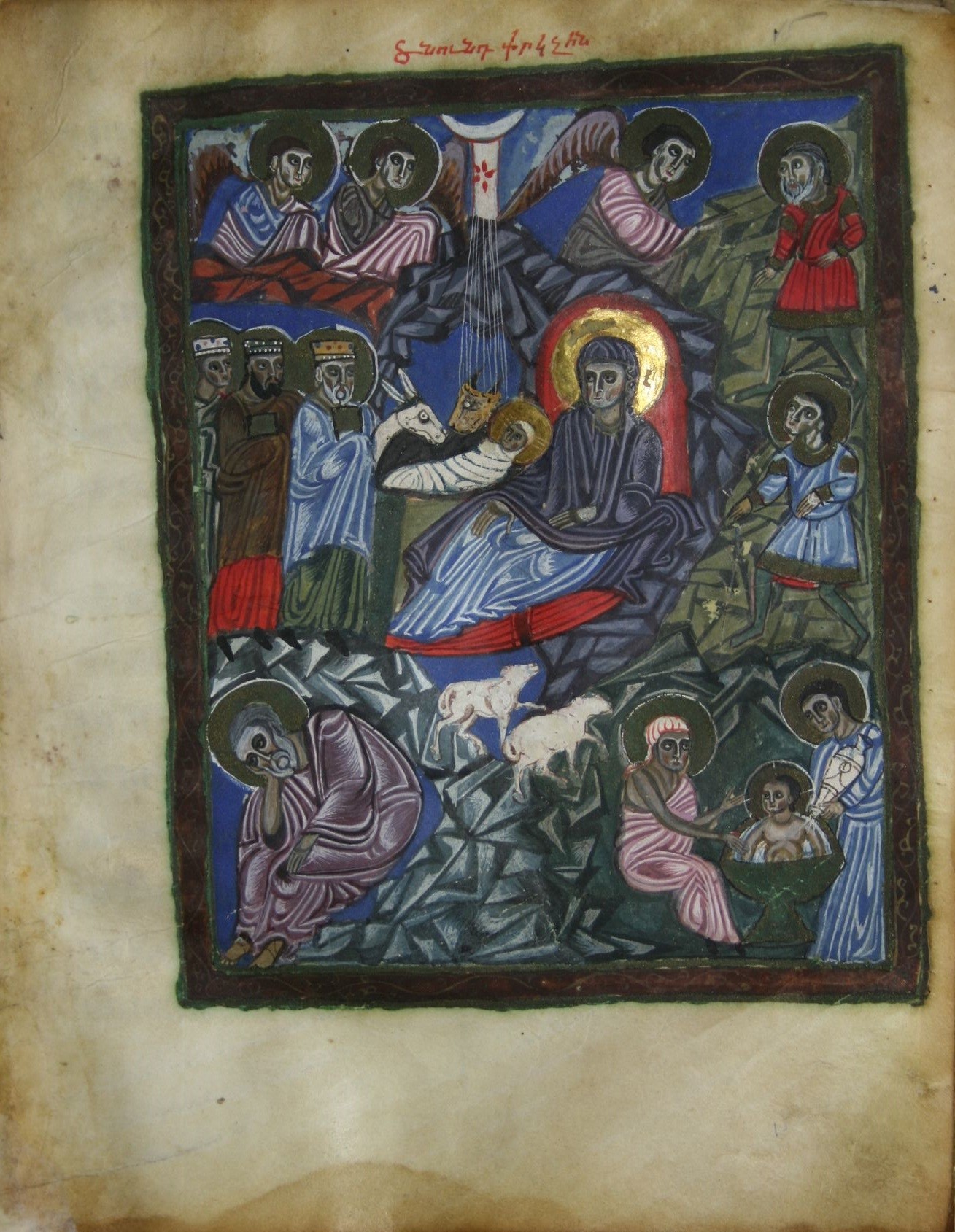At the Targmanchats Monastery of the Gardman Province, a Gospel written on parchment in erkatagir script is kept, called "Targmanchats Gospel" after the monastery (M. 2743).
The Gospel was copied by the scribe Tiratsu in 1232 and Grigor illuminated it (the exact place of copying is unknown).
It is noteworthy that this magnificent manuscript has two painters, both named Grigor. The first Grigor, whom we call Grigor Tsaghkogh, illustrated the canon tables of the concordance, title pages, marginals and ornaments in the same year when the scribe copied the manuscript. The first receiver of the Gospel is the priest John.
Decades after the writing, Prince Grigor Dopyan of Verin Khachen, and his wife Aspan, daughter of Tarsayich Orbelyan of Syunik acquired the manuscript and gifted it to Khadavank, which was the Dopyan family cemetery.
The second Grigor, preserving the palette of Grigor Tsaghkogh, painted the portraits of the evangelists and the Christological cycle. Since the second Grigor illuminated the manuscript in Artsaj, we call him Grigor Artsajetsi.
The scenes from the Life if Christ in the Targmanchats Gospel are full of uniquely emotional tension and inner drama. The characters are depicted in detail. The enchanting charm of the images demonstrate the deep and turbulent feelings of the author.
The Nativity is the second image in the Christological cycle. It usually combines several episodes related to the birth: the adoration of the magi and the adoration of the shepherds, as well as the bath of the baby.
In the Targmanchats Gospel, the scene of birth is at the beginning of Matthew's Gospel, above the image frame, with the annotation "Birth of the Savior."
In the centre of the cave of Bethlehem is Mother of Christ, Jesus wrapped in swaddling clothes in a manger, and to his left is the donkey and beast of burden.
According to the legend, the baby Jesus was warmed by the breath of the donkey and the ass. Virgin Mary, with her left hand slightly raised and her right hand on her knee, is leaning on a red pillow, which symbolizes the royal throne.
To the left of them are the kings of the east, the magi in luxurious clothes and with precious gifts in their hands.
The Magi have different ages corresponding to the three ages of humanity: adolescence, youth and old age.
The first mage is a white-beard old man, the second mage is a middle-aged man with black beard, and the third one is still young.
In the lower-left corner of the miniature, Joseph sits thoughtfully, leaning his head on his right hand, with his back to the other characters.
To the right of Joseph is the episode of the baby bath. This apocryphal scene is based on the “Infancy of Gospel”, according to which Eve becomes an midwife at the birth of the Savior, atoning for her sin. Eve bathes the newborn Jesus, and the woman on the left, Solome, pours a jug of water into a basin.
To the left of Mary are two shepherds without clubs, in knee-length clothing, and below are two white lambs.
Above all, to the right and left of the star of Bethlehem, are the angels. One of the angels looks at the shepherds and announces the birth of Christ.
The official Facebook page of the Matenadaran



